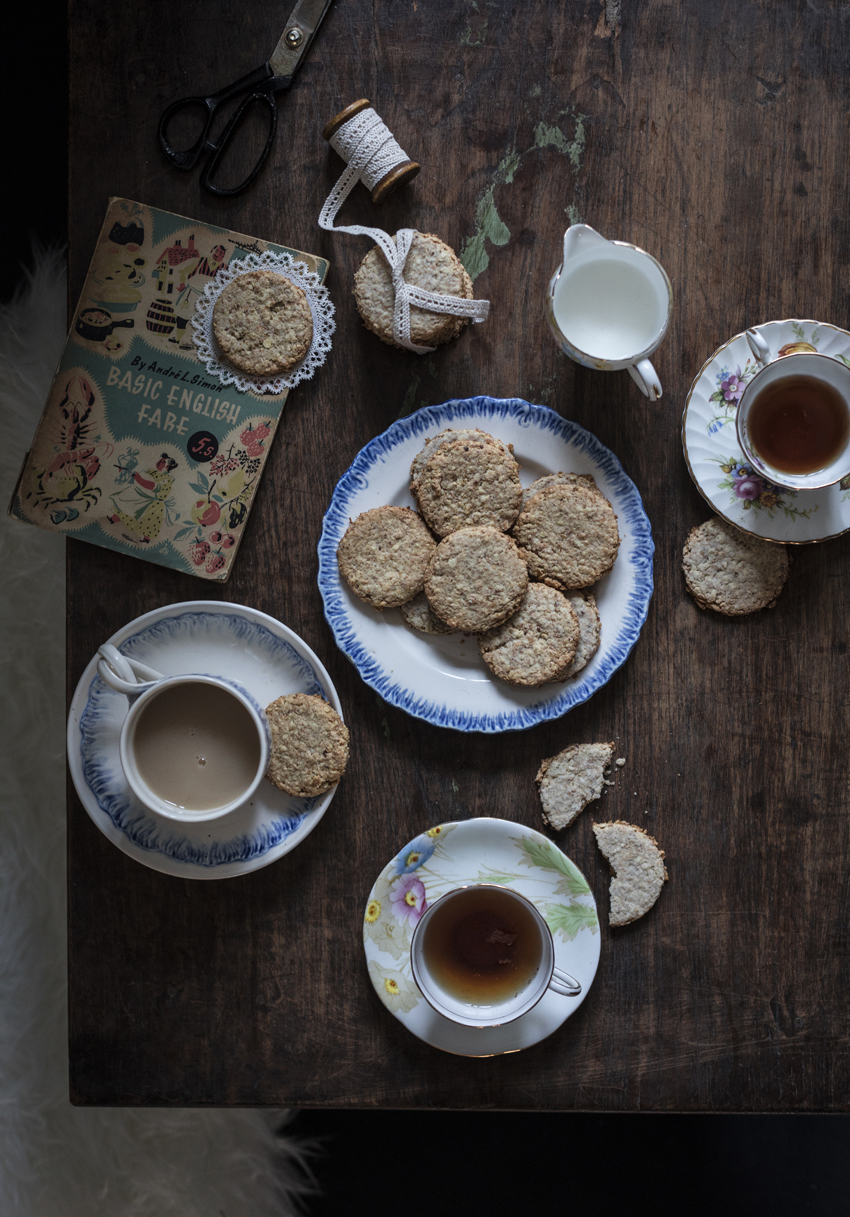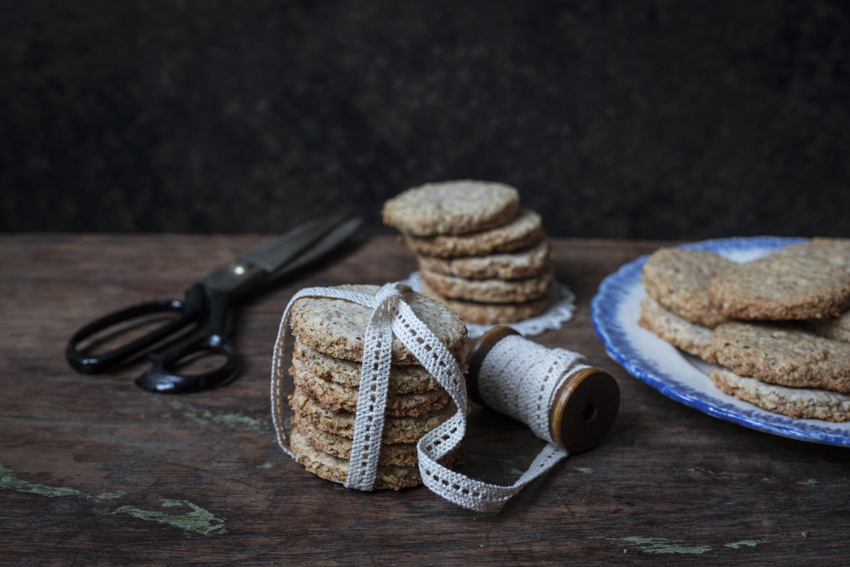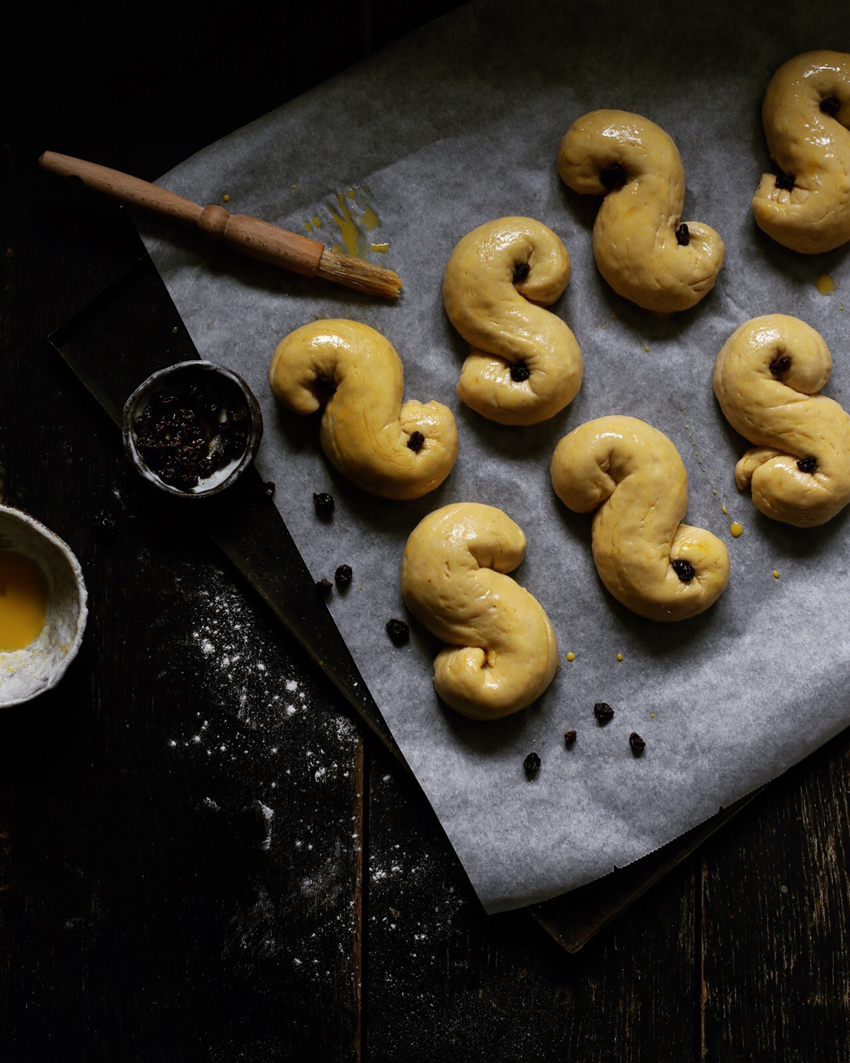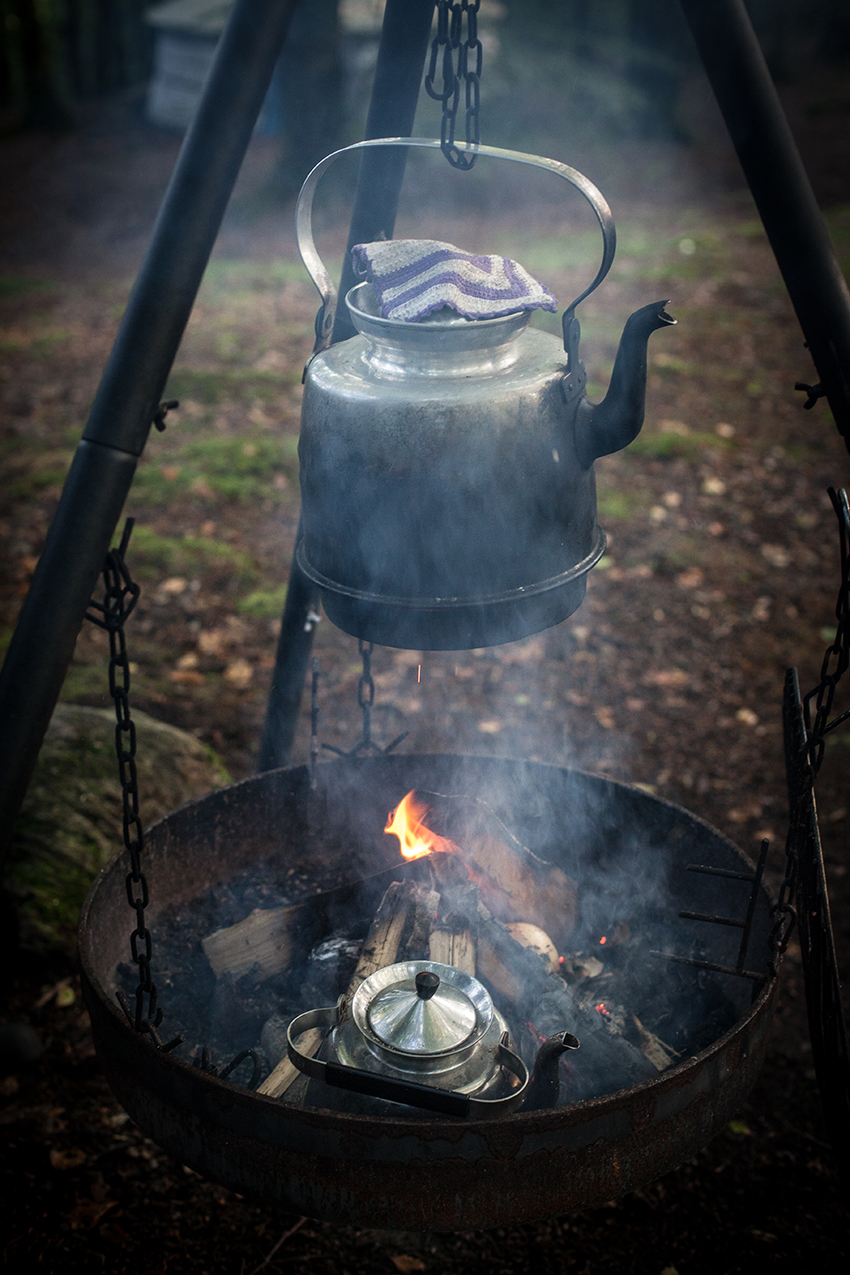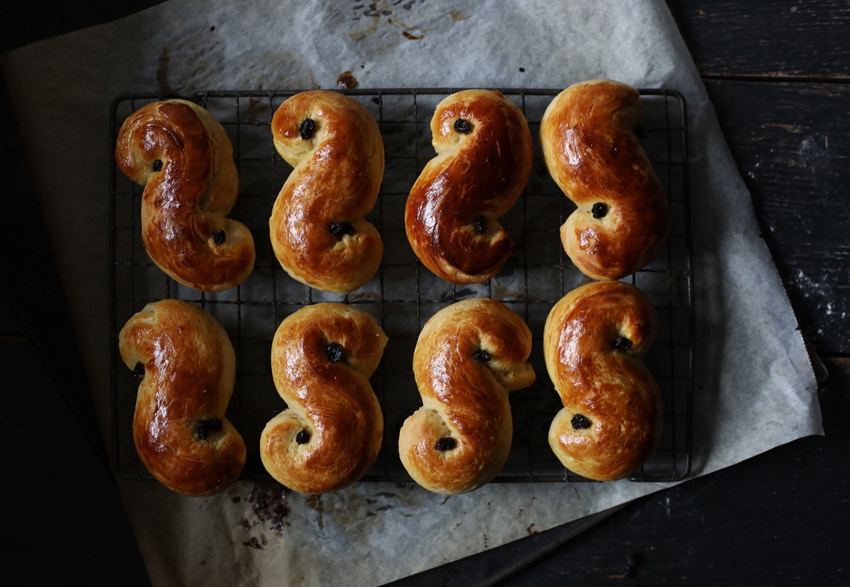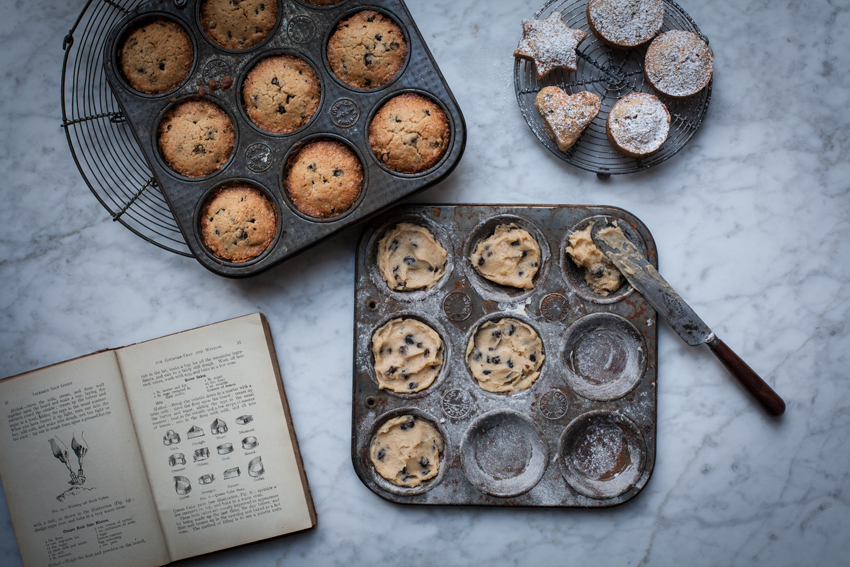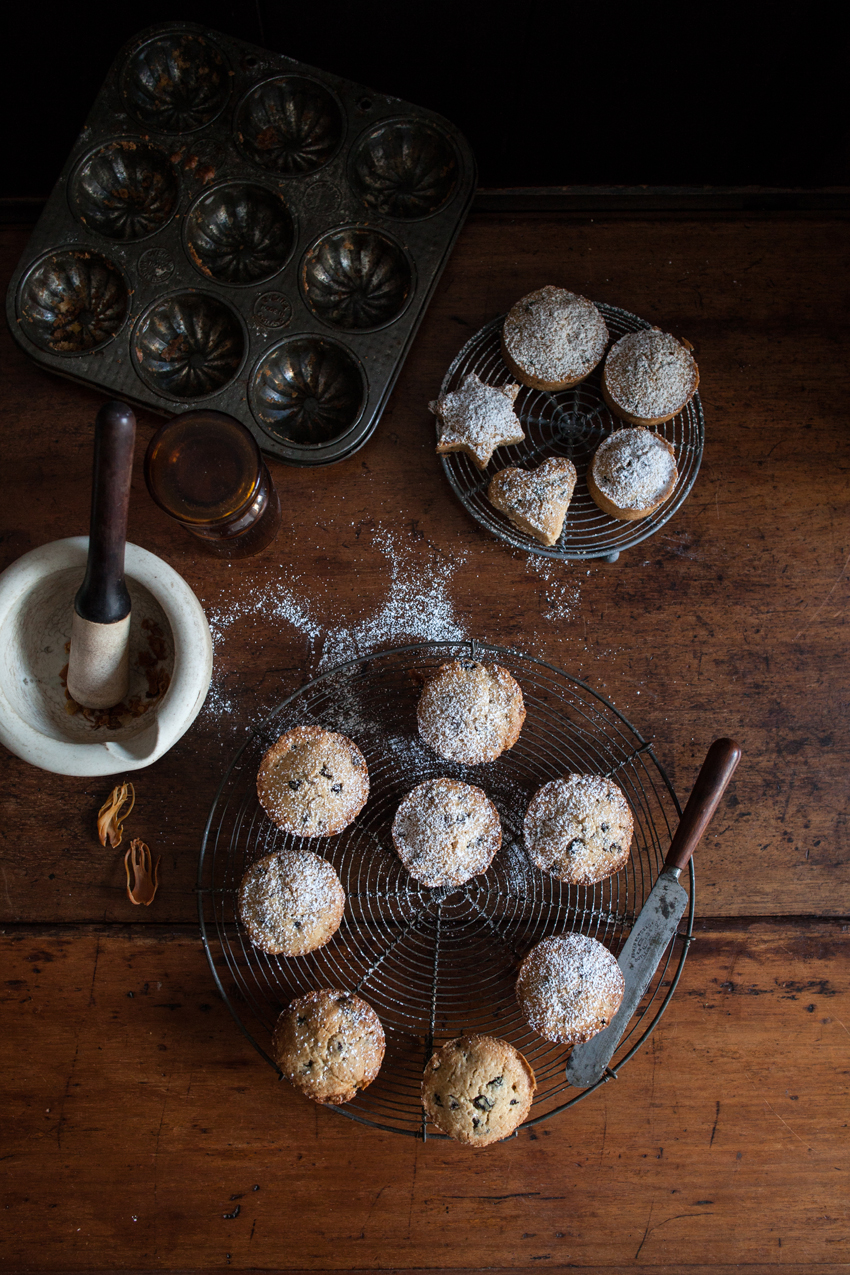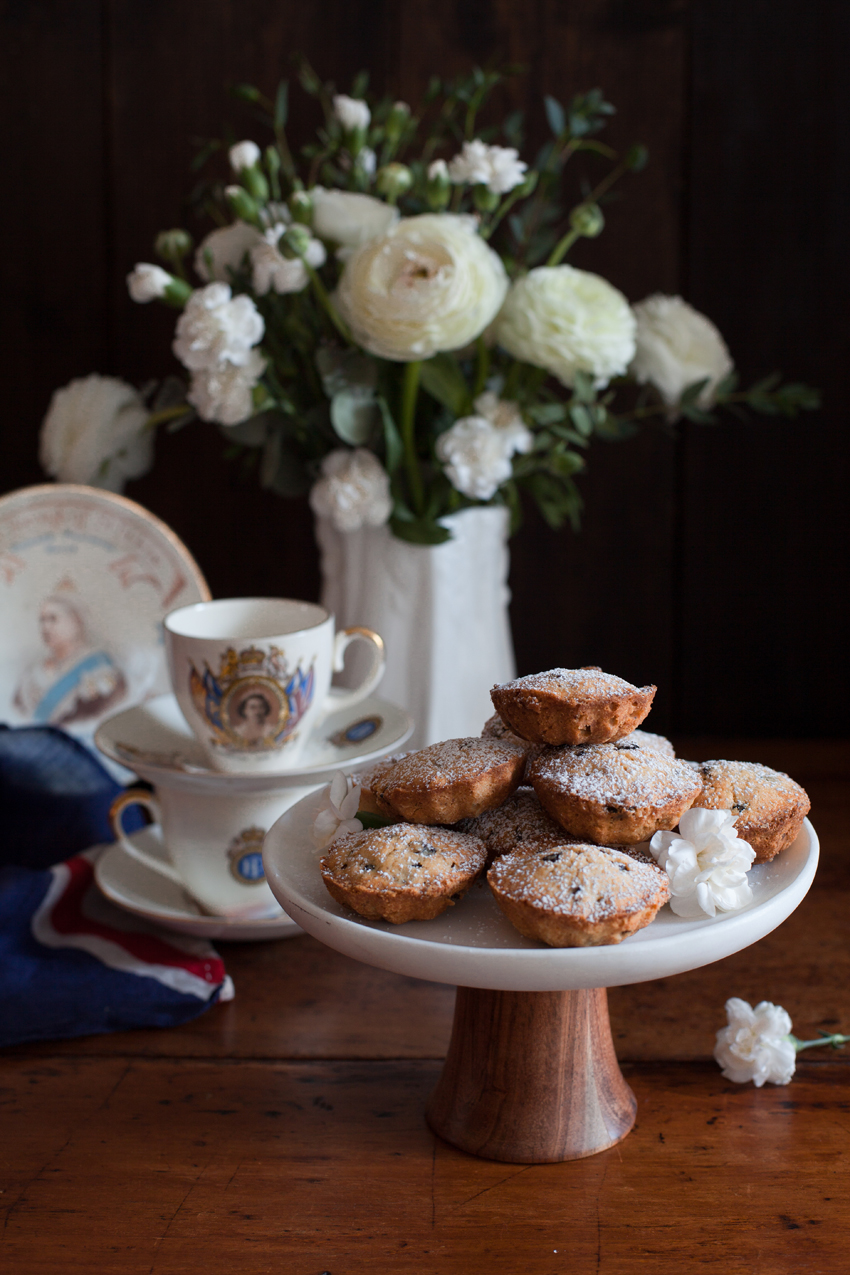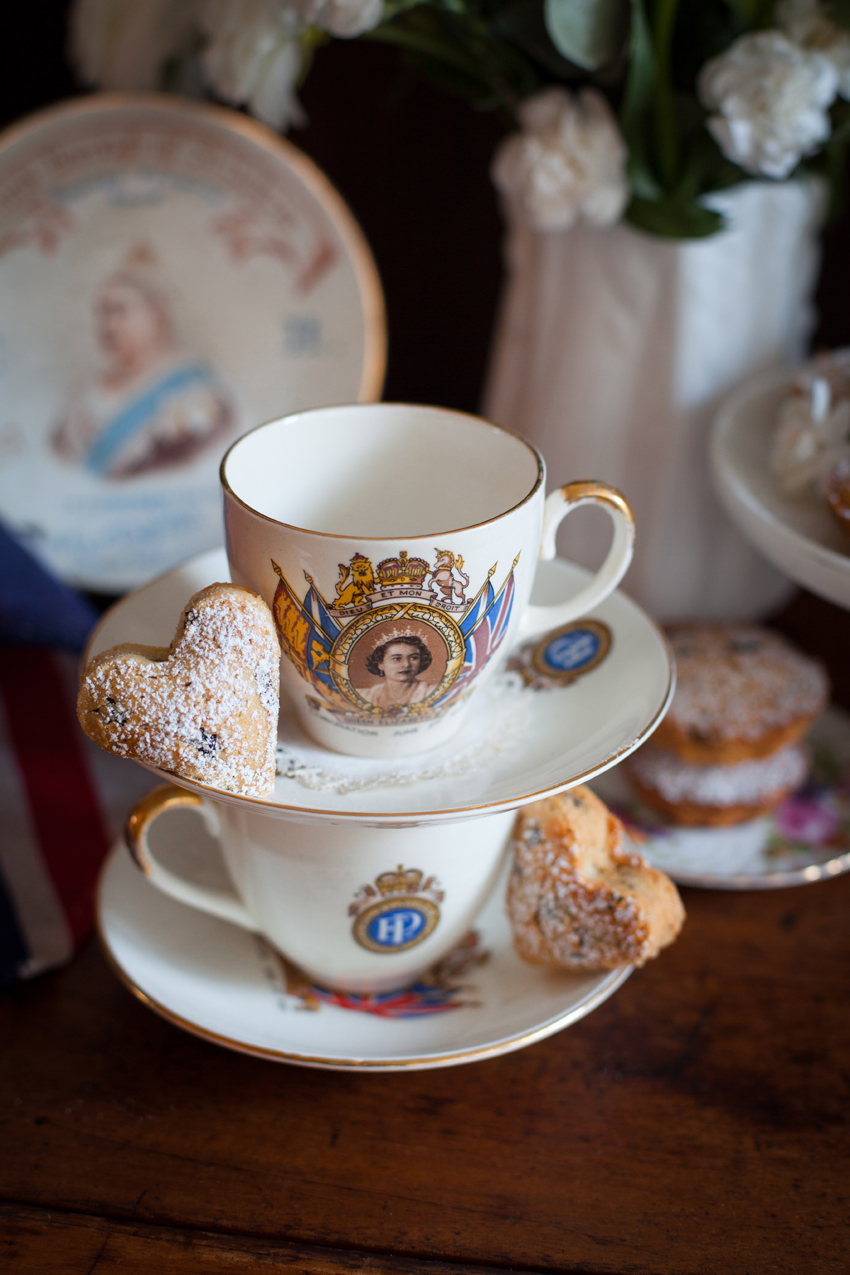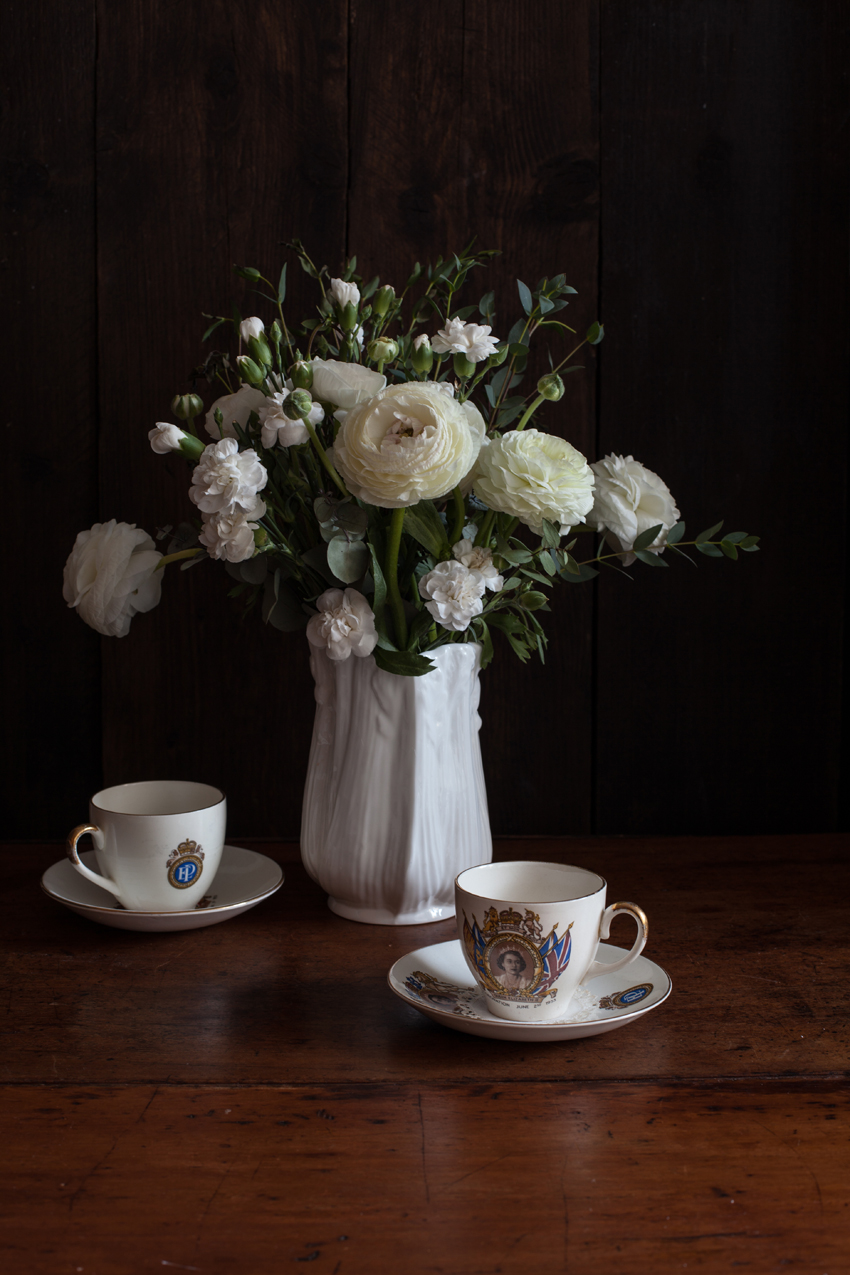The post Digestive Biscuits appeared first on Miss Foodwise.
]]>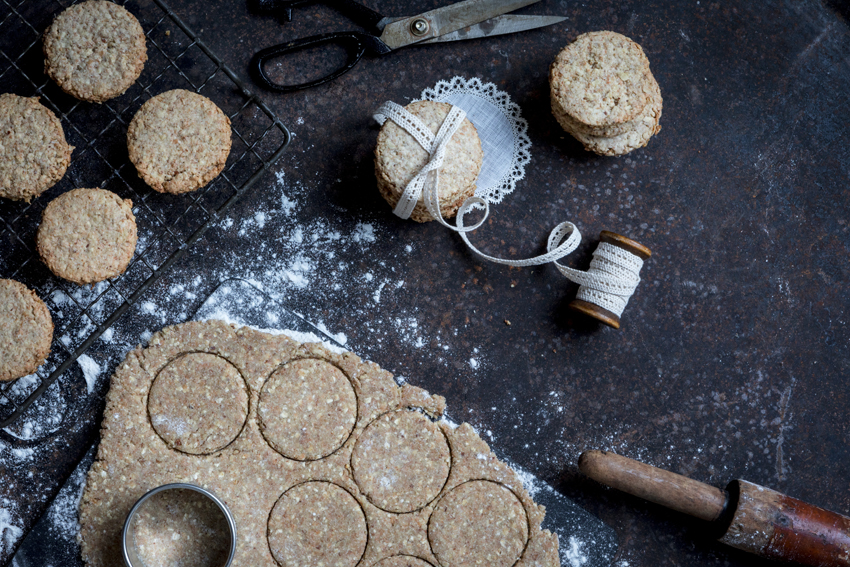 Update on my life: it’s been a little quiet on here because we’ve just bought a new house, sold our current one and are preparing for our move to the woods in April! Right now I’m planning my vegetable garden and new kitchen which is very exciting indeed. My aim is to go for durable and craftsmanship. The latter will probably mean I’ll be able to afford the kitchen cabinets this year (at least I hope so, or it will be vegetable crates!!) and the doors will maybe have to wait until next year. For my fittings I’m going for old established companies who have proven themselves with their quality. My impressive Esse stove will be the main feature, wood fired and surprisingly rated A+ with practically non-existent CO emissions due to new techniques. It’s an exciting time and I can’t want to show you how I get on, especially with vegetable growing! Also, I’m hosting a popup dinner in London 16/2 with Ms Marmite lover at her Underground Restaurant, it will be a (vegetarian) Flemish feast with Belgian beer! To book go here >
Update on my life: it’s been a little quiet on here because we’ve just bought a new house, sold our current one and are preparing for our move to the woods in April! Right now I’m planning my vegetable garden and new kitchen which is very exciting indeed. My aim is to go for durable and craftsmanship. The latter will probably mean I’ll be able to afford the kitchen cabinets this year (at least I hope so, or it will be vegetable crates!!) and the doors will maybe have to wait until next year. For my fittings I’m going for old established companies who have proven themselves with their quality. My impressive Esse stove will be the main feature, wood fired and surprisingly rated A+ with practically non-existent CO emissions due to new techniques. It’s an exciting time and I can’t want to show you how I get on, especially with vegetable growing! Also, I’m hosting a popup dinner in London 16/2 with Ms Marmite lover at her Underground Restaurant, it will be a (vegetarian) Flemish feast with Belgian beer! To book go here >
But on to the news of the day and that is Digestives!
An icon in British biscuit fare, it is illegal to call a digestive ‘digestive’ in the US and it could be one of the reasons the Beatles* split… Impressive for a rather plain looking tea dunker, but yet the biscuit is so adored that the chocolate covered one was elected as the number one biscuit to dip in your cuppa. This leaves the Rich Tea (see my recipe here) on second place, followed by the Hobnob and the plain digestive in fourth place. Shortbread to my amazement came in on ninth place, but then again I do never dunk a shortbread finger into my hot drink even though it’s shape lends it to this action perfectly.
A digestive and a hobnob are quite similar, but the hobnob uses rolled oats and white self-raising flour, while the digestive calls for wholemeal flour and baking powder. Digestives were developed in the 1830’s by two Scottish doctors in the aim to create a biscuit that could aid digestion, hence the name ‘Digestive’. The most popular Digestives are those produced by McVitie’s who started baking them in 1892. However, a recent glance at the packaging revealed their use of palm oil instead of good old butter, something that really infuriates me. It is probably cheaper and more stable to use palm oil, but really when I treat myself to a stack of biccies I want butter and no compromise.
Digestives were often called malt biscuits and the original patent granted for them was titled “Making Malted Bread”. Cassell’s Universal Cookery Book from 1894 gives a recipe for ‘Malt Biscuits’ following: “the recipe for Digestive Biscuits with malt as below may be followed…” He suggests that using ground carraway seeds are a suitable flavouring for persons who suffer from flatulence, but he also mentions that any other spice is optional too.
Recipes for Digestives feature humble ingredients and it should remain so, as my lovely friend Felicity Cloake puts it so well in her piece for the Guardian:
A digestive is not a biscuit that should draw attention to itself.
But on my quest to create my favourite Digestive I did sneak in a little more fancy ingredient and that’s ground up roasted pecans. In the recipe below I’ll give you the option to leave them out, but I find it gives something extra to the biscuit without making it too fancy, it makes it more filling requiring only one, maybe two, instead of a half packet if you skipped lunch. But feel free to leave it out. I also add oats, which is common these days with home made Disgestives. If you want to mimmic the store bought biscuits just use the wholemeal flour.
Enjoy these biscuits, the dough is easily made in advance if you want to serve them freshly baked to guests. They keep for 4 days in an airtight container or a ziplock bag.
*Now about the Beatles… I’m not making this up, the digestive incident was noted down by recording engineer Geoff Emerick in his book Here, There, and Everywhere: My Life Recording the Music of The Beatles. According to Emerick, Yoko Ono (John Lennon’s wife in case you’re from Mars) “was in the recording studio and at one point helped herself to Harrison’s box of McVitie’s while the Beatles were in the control room listening to a playback of the song they’d just recorded. Harrison got angry at Ono, and his subsequent outburst caused Lennon to lose his temper in response.” source
Further reading:
Recipe on this website: Rich Tea Biscuits
How to cook the perfect Digestive biscuit / Felicity Cloake for the Guardian
Chocolate Digestive is nation’s favourite dunking biscuit / The Telegraph
You’ll soon get seven fewer digestives in a packet / Metro
Digestives
Recipe
Makes about 40 biscuits, recipe can be halved.
- 40 g pecans (you can omit these and use 40 g extra flour instead)
- 150g unsalted butter at room temperature
- 100g demerara sugar
- 2 medium eggs
- 1 tsp seasalt
- 1 tsp baking powder
- 150 g rolled oats (small variety, not the large ones) or rough porridge oats
- 260g wholemeal wheat or spelt flour
Method
Roast pecans if you are using them, on a baking tray in the oven for 10 minutes on 200°C. Line two trays with baking parchment. Keep a +- 6 cm cookie cutter ready.
When the pecans (if using them) are cooled, blitz in a mixer until they resemble coarse flour but stop before you see it go oily.
Mix butter and sugar together (in a mixer if you have one) until creamy and add the eggs one by one. Then add the baking powder and start adding the pecans, salt, oats and flour teaspoon by teaspoon. It will take a while for the mixture to come together. The mixture will appear very dry at first but do not be tempted to add milk or water.
Use immediately or wrap in clingfilm and keep in the fridge for a short while or a couple of hours if you must.
When ready to bake, preheat your oven to 200°C if you haven’t already for the pecans. Knead for a few seconds and pat the dough down (the less rolling the better), place on a gently floured working surface or baking parchment and dust with flour too to prevent the rolling pin from sticking. Roll out to half a centimeter and cut out the cookies, transferring them to the lined baking tray. It’s okay to knead leftover dough back together and roll it back out to cut out more cookies, keep doing so until you have used up your dough.
Bake in the middle of your oven for 10-13 minutes, 13 minutes means darker biscuits which I prefer, they keep better too.
Pour yourself a hot drink and dunk your biscuit in it!
The post Digestive Biscuits appeared first on Miss Foodwise.
]]>The post Swedish Saint Lucia Buns on the darkest day of the year appeared first on Miss Foodwise.
]]>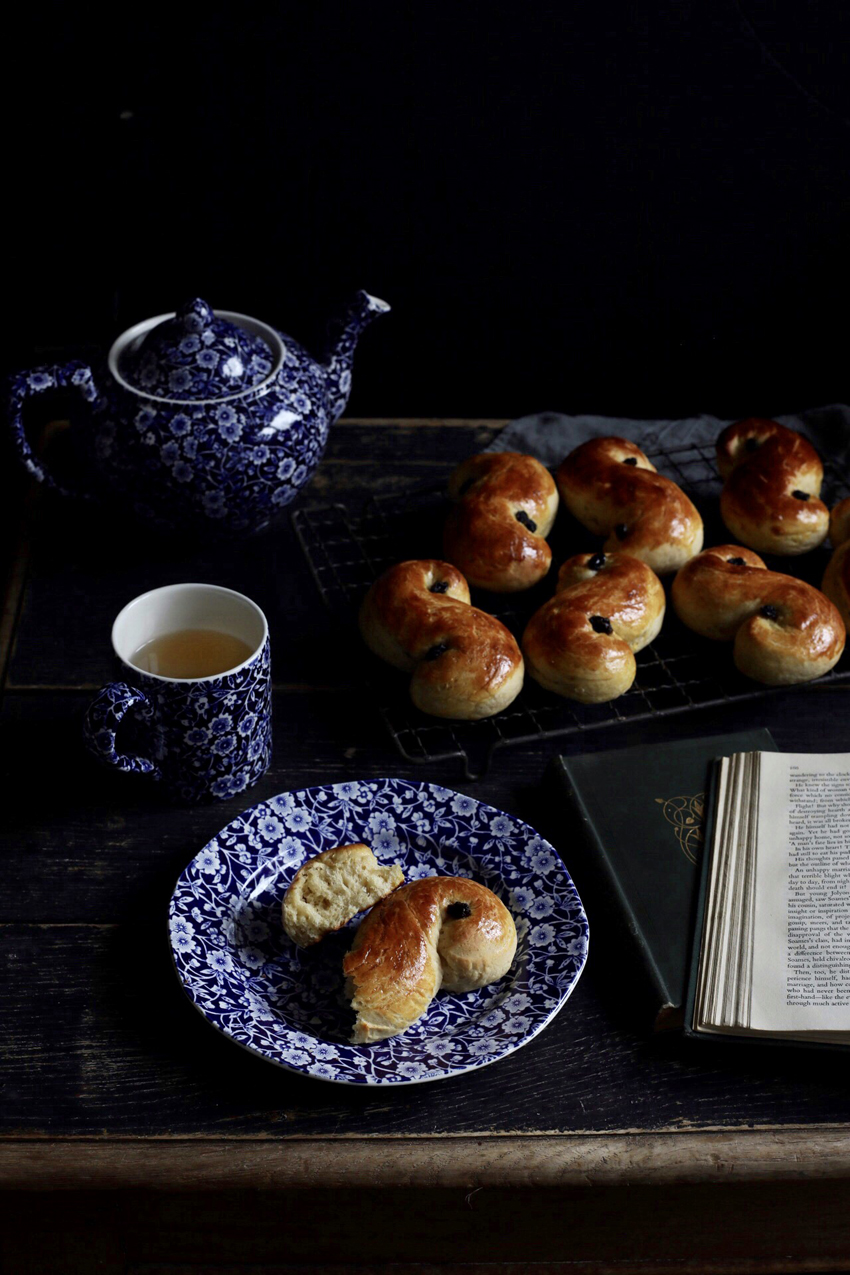 First of all good news! My book Belgian Café Culture (Authentieke Belgische Cafés) has won the ‘Food History’ Award for Belgium at the Gourmand World Book Awards! I’m extremely happy that our Belgian café heritage is getting such recognition, in the hope that this will lead to some day preserving cafés as protected heritage. Now on to todays business…
First of all good news! My book Belgian Café Culture (Authentieke Belgische Cafés) has won the ‘Food History’ Award for Belgium at the Gourmand World Book Awards! I’m extremely happy that our Belgian café heritage is getting such recognition, in the hope that this will lead to some day preserving cafés as protected heritage. Now on to todays business…
Ever since I spent some time in Sweden I can not stop baking traditional Swedish delights! So of course I had to bake on Santa Lucia, which is celebrated in Sweden today. They go by a few names: Lussebullar, Lussekatt, Lussekatter, St.Lucia bullar and plain old saffron buns.
According to tradition it is the eldest daughter of the family who is in charge of baking these buns. Santa Lucia is the christianised pagan feast of the winter solstice. Today is the darkest day of the year and therefore light has to be celebrated and cherished. Before christianisation the Nordic people would celebrate the goddess Frigga or Freya and her awakening from the tree in which she was hiding with her child Baldur. This marks the shortest day and the moment in which the days will start to lengthen again. For pagans today is christmas.
Santa Lucia or Sankta Lucia is a feast of light and celebrated with candles because Lucia wore a candle-lit wreath to guide her through the catacombs to bring food to christians who were in hiding from persecution. Lucia is represented as a lady in a virgin white dress with a red sash symbolising the blood of her martyrdom. In Norway and Sweden girls are dressed like this and one of them wears a wreath crown of candles on her head. The girls parade around the town or village hall with these delicious saffron buns and other delights which symbolises Lucia bringing the light and love of christianity. There is song singing and the whole community comes together.
These buns are easy to make, easy to freeze and have become a staple in our household. Yes I am cheating and eating them all year round! I started from a recipe of a Swedish cookery book from the 1970’s which has had more than 14 editions! I do love to search for the most authentic recipe and there are so many recipes around that this book – I’m in the opinion the older the better – was the best guide. It uses too much sugar so I have reduced that, plus I added a bit of yoghurt or quark which other recipes often do. My method is different too, so scroll down for the recipe
Recipe
What do you need (10 buns)
- 250ml full fat milk
- a pinch of saffron
- 1 pack of dried yeast (about 10-12 grams)
- 420g all purpose flour
- 50g of caster sugar or cane
- a pinch of salt
- 1 egg yolk
- 85 g soft unsalted butter
- 1tbsp of greek yoghurt or quark
- a bunch of currants or raisins for decoration
- 1 eggyolk for eggwashing
Warm the milk with the saffron and let it infuse so it gets a beautiful golden colour, then add the pack of yeast and stir
In a bowl, combine the flour, sugar and salt. Then add the butter and the egg yolk and half of the milk mixture. You can do this in a mixer, I’ve used nothing else since I got my Kenwood in august! Add the rest of the milk gradually and let the mixer (or your hands) knead for 5 minutes on medium fast. The dough will start to form a ball, that is when it is ready.
Now put a towel over the bowl and let the dough rest for 1 hour or until about doubled in size.
Put a piece of baking parchment on a baking sheet. When the dough has rested, knead briefly and roll into a big sausage. You won’t need flour, the dough is sticky but will not stick to your hands or your kitchen counter. Divide into pieces of about 85 grams and roll into snakes to make the shape required. Place neatly on the baking sheet with space in between each bun so they can expand in the oven.
Leave to rest for 30 minutes covered loosely with a tea towel.
Preheat your oven to 250°C
Eggwash your buns, add a currant or raisin on each end an place your buns in the middle of the oven.
Bake for 8-10 minutes.
These buns freeze well, just heat up in an oven before serving!
The post Swedish Saint Lucia Buns on the darkest day of the year appeared first on Miss Foodwise.
]]>The post Queen cakes – 18th century dainty bakes appeared first on Miss Foodwise.
]]>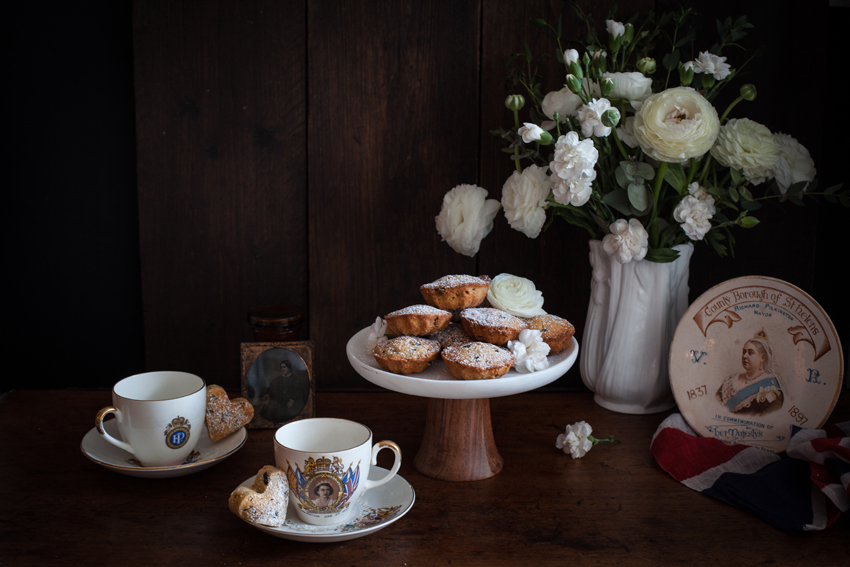
It is not a coincidence that I chose to write about Queen cakes today. If you’ve read the papers and watched the news, or if you are a royalist, then you know today the Queen of England celebrates her 90th birthday. This makes her the world’s oldest-reigning monarch and the longest reigning monarch in English history. Queen Victoria was the previous record holder with her 63 years and seven months. So Queenie has every reason to be smug and have a big party – which is a giant street picnic on the Mall (the strap of wide street in front of Buckingham palace) in june. Getting a ticket for it was near impossible to my regret, because this was a celebration I would have been happy to buy a new hat for, bunting I already have aplenty. So if you’re reading this Your Majesty… is there room for one more? I’ll throw in a book!
But let’s talk about these Queen cakes. They are little cakes, and they started popping up in English cookery books in the 18th century. When reading the several recipes from the 18th to the 20th century I have in original cookery books, they remind me of a little cake I grew up with in Belgium. However, the recipe was slightly different as the Belgian cakes were flavoured with a little vanilla or almond essence, while Queen cakes are flavoured with mace, orange flower water, rose water and lemon depending on the date of the recipe. The Belgian cakes also look more like Madeleines, but they both have currants in them and the use of vanilla or almond essence is of course a slightly more ‘modern’ way to flavour bakes.
As with many English dishes, the Queen cakes come with their own dedicated cake pans. These were produced in the 19th century and depictions of them can be found in at least two books that I know of, one I own. 18th century recipes remain silent about the tins they should be baked in, but it is very possible that the then fashionable mince pie tins would have been used, leaving them without a need to create new tins.
Buying dedicated cake tins was of course an investment, and if you weren’t going to bake Queen cakes every week, rather extravagant. Cookery book author Mrs Eliza Rundell (1806) suggests to use either little tins, patty pans, tea-cups or saucers to bake the batter in. She gives two similar recipes, one with rosewater and currants, another with grated lemon rind omitting the currants. She uses a pound each of butter, flour, sugar and currants to 4 modern eggs.
The earliest recipe appears to be that of Robert Smith (no not that fellar of The Cure) in 1724 in his ‘Court Cookery: or the Compleat English Cook’. He instructs to make his Queen’s Cakes with currants, washed, picked and rubbed clean, and flavourings which are a little Mace and orange flower water. He also uses a pound each of butter, flour, sugar and currants but about 5 modern eggs, omitting half the whites.
Take a Pound of dry’d Flower, a Pound of refin’d Sugar sifted, and a Pound of Currans wash’d, pick’d, and rubb’d clean, and a Pound of Butter wash’d very well, and rub it into the Flower and Sugar, with a little beaten Mace, and a little Orange-Flower Water; beat ten Eggs, but half the Whites, work it all well together with your Hands, and put in the Currans; sift over it double-refin’d Sugar, and put them immediately into a gentle Oven to bake.”
Court Cookery: or the Compleat English Cook, Robert Smith, 1724
Jumping to 1907 Frederick Vine gives an illustration (see book in picture above) of the Queen cake pans in his book ‘Saleable Shop Goods’. There are heart, clover, triangle, square, round and cutlet shapes. The recipe in this book uses a lot more flour (so less sugar) and only lemon essence, no currants in the batter, but he does instruct to sprinkle them on top of the cakes just before baking.
In the early 20th century recipes for Queen cakes aplenty with books often giving the option of 4 different recipes. Currants are back into the batter and several flavourings and toppings are suggested. It is quite possible that queen cakes were a term for all kinds of small cakes, much like fairy cakes or cupcakes. The recipe I’m giving you today are 18th century Queen cakes, recipe adapted (meaning recreated, I didn’t mess with it) from Robert Smith …
Some notes to the recipe
I find the cakes too sweet because they use an equal amount of sugar to butter and flour so I would definitely reduce this to 150 g. You can reduce the amount of currants to half, you will still have plenty of currants. Robert Smith suggests using your hands to mix everything, which I have done and worked much faster and better with the currants. Frederik Vine in his 19th century book tells us to use a palette knife to transfer the batter to the cake tins and I find that indeed using a small palette knife or blunt butter knife to do this works best. The original cake tins used for these looked a lot like cookie cutters with a base, but because the batter is so solid you can use cookie cutters placed on baking parchment (well buttered and dusted with flour of course) and fill these. In the past, cake tins or hoops didn’t always have a base. Finally, you could use self-raising flour if you want a lighter bake… this was done in the 19th century too.
What do you need – makes 20-22 cakes
- 250 g soft butter
- 250 g raw cane sugar
- 1/2 tsp ground mace (use mace blades bashed in a mortar, ready ground will give another result)
- 2 tsp orange flower water
- 250 g currants, soaked if you have the time
- 250 g flour
- 4 eggs, separated, of which one white discarded (nothing will go wrong if you leave it in)
Method
Prepare small cake tins, or cookie cutters about 5cm wide by generously buttering them and dusting them with flour.
Preheat your oven to 160°C
Cream butter and sugar as you would for regular pound cake. Now bash your mace blades in a mortar, I used two but any leftover can be kept in a jar for future use. Pour in the orange flower water and add the egg yolks one at a time.
Sift in the flour and mix well, the batter is quite dry for a cake batter so don’t be alarmed by this. When thoroughly combined, fold in the currants. I use my hands to combine the flour with the rest of the batter, you will soon see that this is indeed the best option and our 18th century writer is right (see note to the recipe above).
Whisk your egg whites until stiff, then fold into the batter with a spatula.
Use a palette knife to transfer batter to your cake tins, spreading it evenly.
Place in the middle of your preheated oven and bake for 30 minutes or untill golden brown. The cakes should have a dome from rising in the oven. When flat, they are tough.
Remove from the tins after 2 minutes and cool on a wire rack.
Finally, when cooled, dust with icing sugar and serve.
You Might also Enjoy
Francatelli’s Queen Victoria and Albert pudding >
The post Queen cakes – 18th century dainty bakes appeared first on Miss Foodwise.
]]>